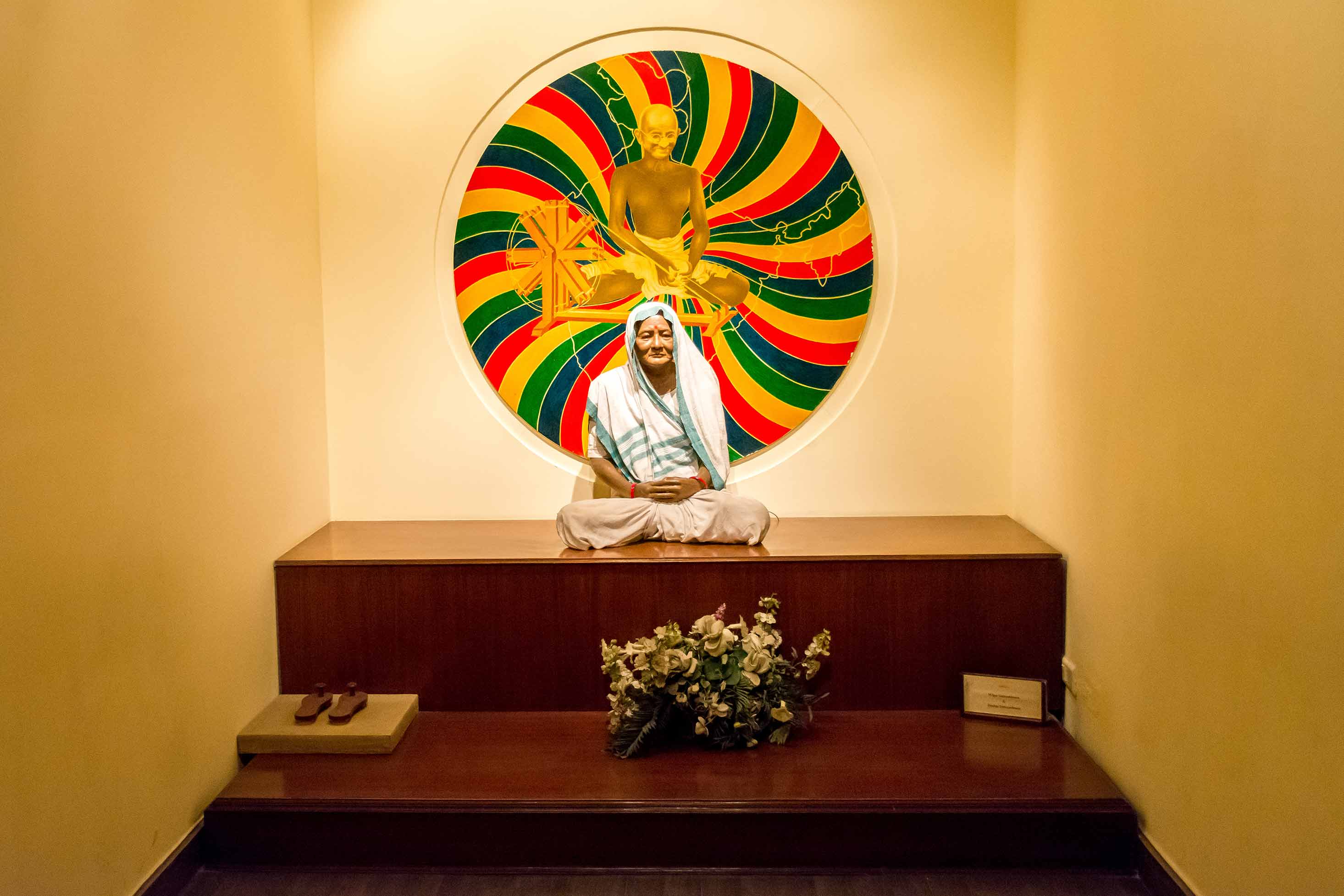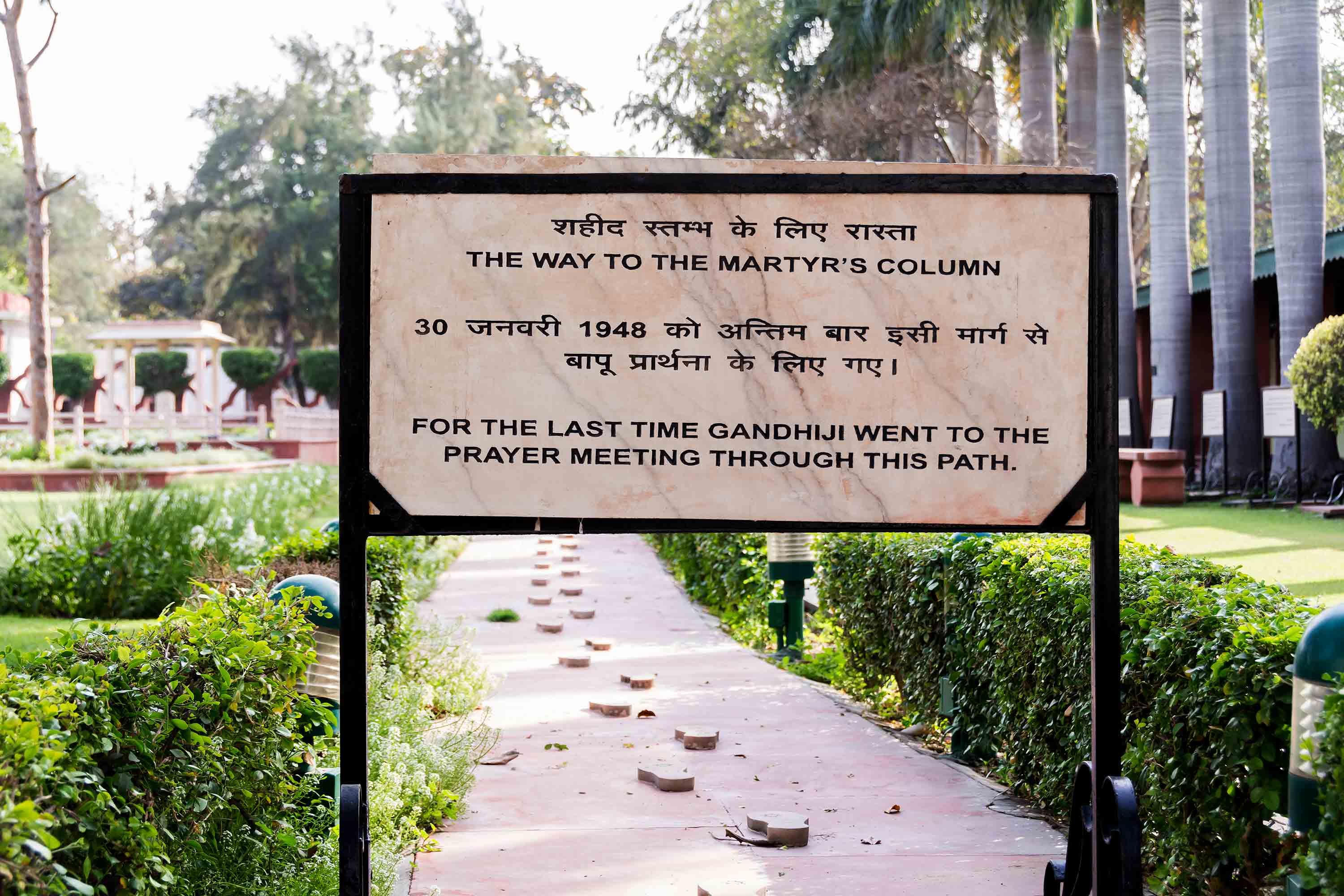A museum dedicated to Mahatma Gandhi, this is the site where Mahatma Gandhi spent the last 144 days of his life and was assassinated on 30th January 1948. The 12-bedroom house was built in 1928 by Ghanshyamdas Birla. Sardar Patel and Mahatma Gandhi were frequent guests of the Birlas. They sold this house to the government and when the House was opened to the public, it was renamed as Gandhi Smriti. The museum in the building houses a number of articles associated with Gandhi's life and death. Visitors can tour the building and grounds, viewing the preserved room where Gandhi lived and the place on the grounds where he was shot while holding his nightly public walk. Gandhi was shot during his prayers at the place where Martyr's Column now stands. Outside the house stands a pillar that contains a swastika symbol. The prominence of the pillar means that it has been used as a visual example of the way the ethical meaning of the swastika symbol had changed in the West in the 20th century. A large collection of photographs with a few personal belongings and a series of small doll houses and terracotta dolls illustrating Gandhiji's life are the attractions at this museum. The preserves include the room where Mahatma Gandhi lived and the prayer ground where he held a mass congregation every evening. It was here that the assassin’s bullets felled Gandhiji. The building and the landscape have been preserved as they had been in those days.
The Memorial consists of: (a) Visual aspects to perpetuate the memory of Mahatma Gandhi and the noble ideals he represented, (b) Educative aspects to focus concentrated attention on certain values of life that made Gandhi a Mahatma, and (c) Service aspects to introduce activities in order to subserve certain felt needs.
On display in the Museum are photographs, sculptures, paintings, frescos, inscriptions on rocks and relics pertaining to the years Mahatma Gandhi spent here. The meagre personal effects of Gandhiji too are carefully preserved.
A larger than life statue of Mahatma Gandhi, with a boy and a girl holding a dove in their hands standing on either side, emerging out of the globe, symbolising his universal concern for the poor and the deprived, welcomes the visitor at the main entrance of the Gandhi Smriti. It is the work of the renowned sculptor Sri Ram Sutar. The legend at the base of the sculpture says, "My Life is My Message".
28.60177, 77.2143393




